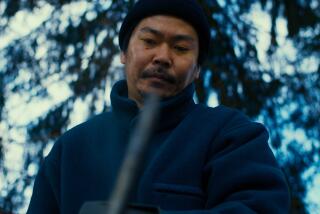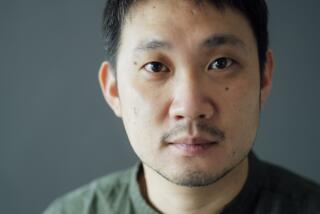Review: ‘Inside the Yellow Cocoon Shell’ is one of the best movies of this young year
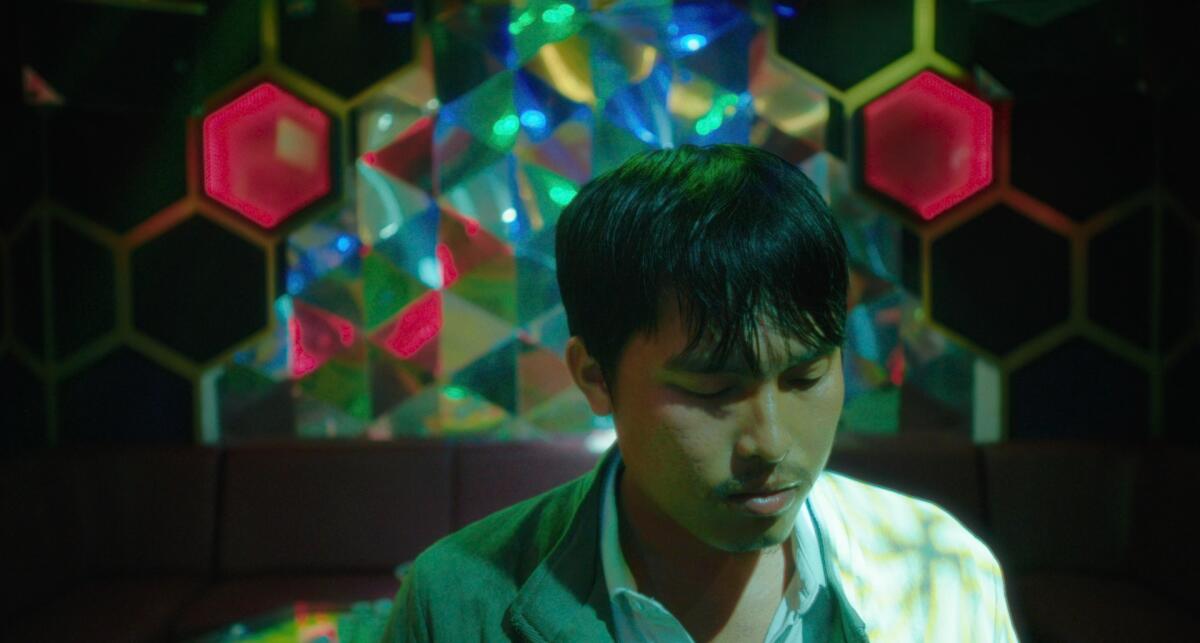
There’s a single-take sequence in “Inside the Yellow Cocoon Shell” that, over roughly 20 minutes and less than a mile’s journey, seems to distill a small corner of eternity. We are somewhere in the Vietnamese countryside, where a soft-spoken young man named Thiên (Le Phong Vu) is sent on an errand by a friend. A different filmmaker might have cut straight to the errand, or perhaps the outcome of the errand, or even kept the errand and this entire conversation about the errand off-screen. But the director, Phạm Thiên Ân, does none of these things. Instead he reminds us that even the most seemingly insignificant moments — and there is nothing insignificant in the world of this patient, gorgeous, quietly spellbinding movie — can open a gateway to the sublime.
Phạm shows us the errand in full: After talking to his friend, Thiên rides away on his motorbike, the camera, never looking away, following closely behind, down a dirt road and up to the home of a local elder, Mr. Luu, who welcomes him inside. As we slowly zoom into the house through an open window, the two men discuss their business: Thiên wants to pay for a service rendered, but Mr. Luu refuses for reasons that, as he explains, have something to do with his decades-ago experience as a soldier fighting the Viet Cong. His inability to accept payment now, he suggests, is an expression of his faith in God, as emblematized by the Jesus figurines we see proudly displayed next to his army certificates. Not for the first time in “Inside the Yellow Cocoon Shell,” the possibilities of transcendence and violence are closely entwined.
When you first see this sequence, your jaw may rightly drop at the sheer virtuosity of Phạm’s filmmaking, the assurance with which he orchestrates such a precise, complex suite of camera movements across a wide stretch of physical terrain (and with a cast of extras that includes several chickens and bulls). Your astonishment may deepen with the knowledge that Phạm is in his mid-30s, and that this movie is his maiden voyage (it won the Caméra d’Or for best first feature at last year’s Cannes Film Festival). But in time — and this is the key, I think, to Phạm’s art — you all but forget about the camera’s existence and are simply caught up, like Thiên himself, in the hypnotic flow of Mr. Luu’s words.
The typical purpose of an uninterrupted long take is to establish a sense of physical continuity. But in “Inside the Yellow Cocoon Shell,” which accumulates one such unbroken sequence after another over a mesmerizing three hours, the continuity is spiritual as well as spatial. In a way, the movie’s sinuous technique ushers us into its protagonist’s head space, allowing us to experience Thiên’s interaction with this kind, wise elder at the same rhythm that he would, and in a similar state of mind. And yet the camera, always maintaining a certain observational distance from the characters, also seems to embody a larger, more mysterious perspective. If we are inside Thiên’s head, then we are also beholding him through God’s eyes.
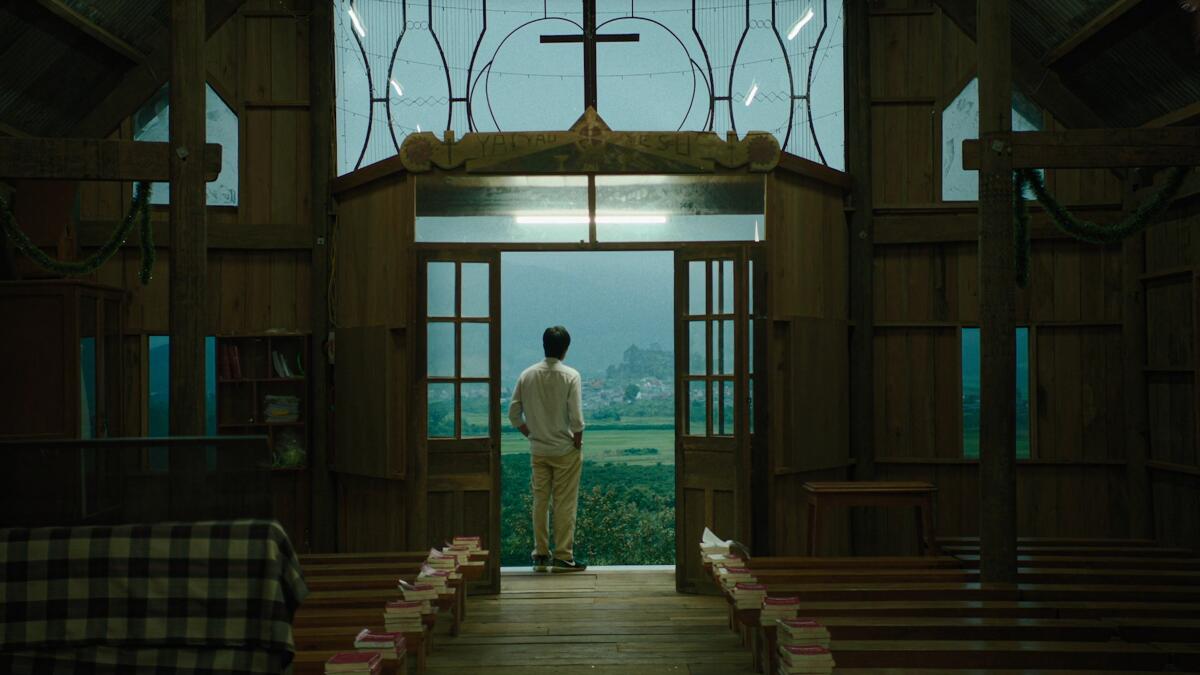
Are you already bewildered — or, dare I say, bored? Good; now go see this movie. I cannot promise that the experience will clear up your confusion, or that you will be held as rapt by every moment as I was. But approached in the right frame of mind, hopefully within the darkened confines of a movie theater (as opposed to your living room), “Inside the Yellow Cocoon Shell” reminds us that confusion is often a necessary first step toward enlightenment, and that bafflement and beauty often go hand in hand. This is a lesson that Thiên must learn as well. The gift of this movie is that it invites us to learn it alongside him.
His education begins in a bustling outdoor dining area in the city of Saigon, where he and two buddies are sharing a meal, casually watching a World Cup match (it’s 2018) and having a deep conversation about the meaning of life and the existence of God. Their philosophizing is frequently interrupted, once by a woman offering them beer and also by the cheers of nearby spectators. It’s a reminder that all of life — the profound and the mundane, the epiphanies and the everyday distractions — tend to bump up against each other without interruption. And you sense, from Thiên’s spaced-out expression and general disinterest in the discourse, that he’s grown tired of that cacophony, which has effectively numbed him to reality.
And so when a shocking crash occurs and the camera pans to reveal some motorcycle wreckage just a few yards from their table, Thiên barely looks up: It will take more than someone else’s tragedy to jolt him out of his stupor. But more is very much in store, and tragedies, he’ll learn in a bitterly ironic twist, tend to travel in packs. Before long he receives news of the recent death of his sister-in-law, Hanh, and finds himself temporarily looking after her 5-year-old son, Dao (Nguyen Thinh). And so uncle and nephew journey back to the rural village where Hanh grew up, attending her funeral services over several days and beginning a tentative search for Tam, Dao’s father (and Thiên’s brother), who hasn’t been seen in years. But as Thiên gradually emerges from what feels like a years-long trance, it becomes clear that he’s also searching, intently, for himself.
His quest will lead him down winding mountain roads, beside still waters and across a scenic rooftop, all of which strike a restful contrast with the urban bustle of Saigon, with its packed soccer fields and erotic massage parlors. The subtle contrast between town and country is but one aspect in which Phạm’s filmmaking evokes the contemplative, intoxicating style of the Thai filmmaker Apichatpong Weerasethakul (“Memoria,” “Uncle Boonmee Who Can Recall His Past Lives”); their shared appreciation for mist-wreathed landscapes and the teeming sounds of the natural world are another. Elsewhere, I was reminded of Bi Gan (“Long Day’s Journey Into Night”), a Chinese director who is roughly the same age as Phạm, and who also composes tracking shots of astonishing logistical intricacy and duration.
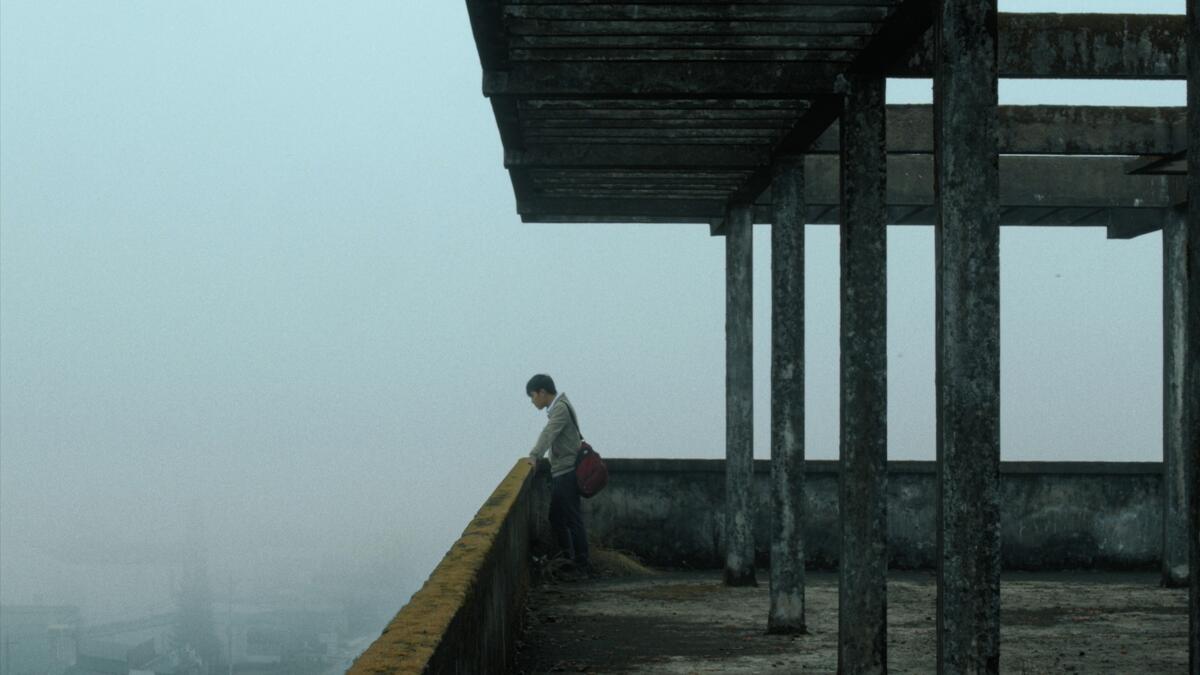
But for all these similarities of style and effect, Phạm’s movie sways to its own hypnotic beat and, true to its title, seems to encase us in a cocoon-like structure whose contours and parameters we have to figure out for ourselves. We follow Thiên as he tries to make sense of his place in the world, a journey that at one point brings him into contact with an older woman who speaks in cryptic homilies. “The brevity of suffering compared to eternity is but a fleeting moment,” she says, after recounting an out-of-body experience when her soul briefly departed this mortal plane.
The more it unwinds, the more freely “Inside the Yellow Cocoon Shell” itself seems to traverse different registers of existence, slipping almost imperceptibly between past and present, dream and waking reality. Thiên’s conversation with a young nun, who looks at him with faint reproach, segues a few beats later into a tender moment from years earlier, when they were boyfriend and girlfriend. One hauntingly muted sequence, emerging as though from the fog of memory, appears to re-create the moments before that fateful motorcycle crash, as seen from the rider’s point of view. Our entry into and out of one flashback is signaled, cleverly, by the amount of dirt on Thiên’s bike tires, a grounded detail in an otherwise free-floating metaphysical puzzle.
It’s hardly surprising that Phạm leaves that puzzle unsolved. There’s a reason, I think, that the director repeatedly foregrounds religious rituals and icons, whether he’s lingering on the Catholic funeral services held for Hanh or showing us the Christian symbols and paintings displayed in other people’s homes. There’s real consolation to be found in these articles of faith, but there are also obvious limitations; the world and its meanings, Phạm seems to suggest, will never conform to a single tradition or doctrine. To that end, it’s telling that Thiên, first introduced looking downcast and distracted, has by the end turned his gaze quietly heavenward. That he doesn’t yet have the answers to his questions seems to matter less than the fact that he’s finally asking them to begin with.
'Inside the Yellow Cocoon Shell'
Not rated
In Vietnamese with English subtitles
Running time: 2 hours, 58 minutes
Playing: Starts Thursday at Los Feliz Theatre, Los Angeles
More to Read
Only good movies
Get the Indie Focus newsletter, Mark Olsen's weekly guide to the world of cinema.
You may occasionally receive promotional content from the Los Angeles Times.

